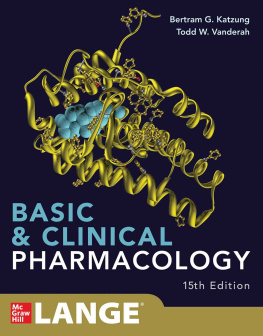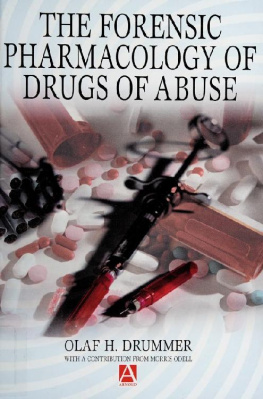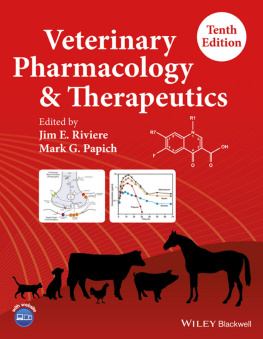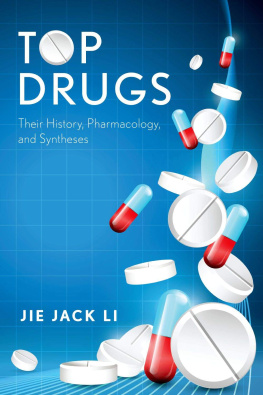
Table of Contents
List of Tables
- Chapter 01
- Chapter 02
- Chapter 03
- Chapter 04
- Chapter 05
- Chapter 06
- Chapter 07
- Chapter 09
- Chapter 10
- Chapter 11
- Chapter 12
List of Illustrations
- Chapter 01
- Chapter 02
- Chapter 03
- Chapter 04
- Chapter 05
- Chapter 06
- Chapter 07
- Chapter 08
- Chapter 09
- Chapter 10
- Chapter 11
- Chapter 12
- Chapter 13
- Appendix A
- Appendix B
- Appendix C
Guide
Pages
Introduction to Drug Disposition and Pharmacokinetics
STEPHEN H. CURRY
ADispell Inc., Rochester, New York, USA
ROBIN WHELPTON
Queen Mary University of London, UK
This edition first published 2017
2017 John Wiley & Sons, Ltd
Registered office
John Wiley & Sons, Ltd, The Atrium, Southern Gate, Chichester, West Sussex, PO19 8SQ, United Kingdom
For details of our global editorial offices, for customer services and for information about how to apply for permission to reuse the copyright material in this book please see our website at www.wiley.com.
The right of the author to be identified as the author of this work has been asserted in accordance with the Copyright, Designs and Patents Act 1988.
All rights reserved. No part of this publication may be reproduced, stored in a retrieval system, or transmitted, in any form or by any means, electronic, mechanical, photocopying, recording or otherwise, except as permitted by the UK Copyright, Designs and Patents Act 1988, without the prior permission of the publisher.
Wiley also publishes its books in a variety of electronic formats. Some content that appears in print may not be available in electronic books.
Designations used by companies to distinguish their products are often claimed as trademarks. All brand names and product names used in this book are trade names, service marks, trademarks or registered trademarks of their respective owners. The publisher is not associated with any product or vendor mentioned in this book.
Limit of Liability/Disclaimer of Warranty: While the publisher and author have used their best efforts in preparing this book, they make no representations or warranties with respect to the accuracy or completeness of the contents of this book and specifically disclaim any implied warranties of merchantability or fitness for a particular purpose. It is sold on the understanding that the publisher is not engaged in rendering professional services and neither the publisher nor the author shall be liable for damages arising herefrom. If professional advice or other expert assistance is required, the services of a competent professional should be sought.
Library of Congress CataloginginPublication Data applied for
ISBN: 9781119261049
A catalogue record for this book is available from the British Library.
Preface
The application of knowledge of drug disposition, and skills in pharmacokinetics, is crucial to the development of new drugs and to a better understanding of how to achieve maximum benefit from existing ones. No matter how efficacious a potential new drug may be in the laboratory, the development of the new agent will come to nought if it cannot be delivered to its site of action and maintained there for sufficient duration for it to have the desired effect. Similarly, if it transpires that one (or more) of its metabolites is toxic then further development will cease. Also, knowledge of the concepts and principles of pharmacokinetics allows better clinical use of drugs and for this reason the topic is considered to some degree in most pharmacological texts.
We have written this book for those wishing, or needing, to study the topic in more depth than covered by most books of pharmacology. As an introductory text to drug disposition and pharmacokinetics, the book takes the reader from basic concepts to a point where those who wish to will be able to perform pharmacokinetic calculations and be ready to read more advanced texts and research papers. Exercises and further references have been included on the companion website for such readers.
The book will be of benefit to students of medicine, pharmacy, biomedical sciences and veterinary science, particularly those who have elected to study the topic in more detail, such as via electives and special study modules. It will be of benefit to those involved in drug discovery and product development, pharmaceutical and medicinal chemists, as well as budding toxicologists and forensic scientists who require the appropriate knowledge to interpret their findings. It will also provide a starting point for clinical pharmacologists, and may find use amongst professionals on the fringes of biomedical science, such as analytical chemists and patent lawyers. The book has been arranged to take the reader from a brief introduction to largely qualitative descriptions of drug disposition, and then to kinetic modelling to explain and predict drug effects, and to assist in the development of analytical skills that are needed in evaluating and mathematically describing pharmacokinetics. From there, we describe the special factors encountered in patient populations. The journey finishes with consideration of how aspects of drug interactions and toxicity are explainable, and indeed predictable, from consideration of the pharmacokinetic principles described in the previous chapters. The book concludes with a short history of the topic from its origins to where it is today and reflects upon the future, including the contribution that the reader might make. This chapter may be read as an introduction, but we feel the reader will gain most benefit by reading it with the knowledge of the previous chapters.
We envisage that some students will find the first chapters helpful in their early years and find the later ones more relevant if they gain more clinical experience, or find themselves working alongside clinicians. For some readers the book will provide all that they require but for others the book will be a valuable introduction to the topic, allowing them to progress to more advanced aspects of the subject.
We are grateful to the publishers for agreeing to the use of fullcolour illustrations throughout as this enhances the learning experience and enables readers to assimilate what they need to know much more quickly. For example, many of the principal pharmacokinetic relationships can be demonstrated empirically by the movement of dye into and out of volumes of water, an approach we have used to illustrate the validity of several models, and one that has proved popular with our own students. We encourage the reader to visualize such movement, and we have reinforced this by including colour plates. Specific examples, some from our own experience, and others from the literature, often of seminal importance to the development of the subject, are included. Some of these examples refer to drugs that might be considered as being old, and indeed some may no longer be available in some countries, but many, propranolol, warfarin, digoxin, aspirin, and theophylline for instance, are still important members of their respective classes. Some of our examples, such as phenacetin and phenylbutazone, have been withdrawn or are no longer used in humans, but were the subject of investigations that informed our understanding, particularly of interactions and toxicity. We have not felt it necessary to search for examples involving more recently introduced drugs when drugs with more familiar names have already provided the examples that were needed. To do so would only increase the burden of drug names for the reader to learn.
Next page







